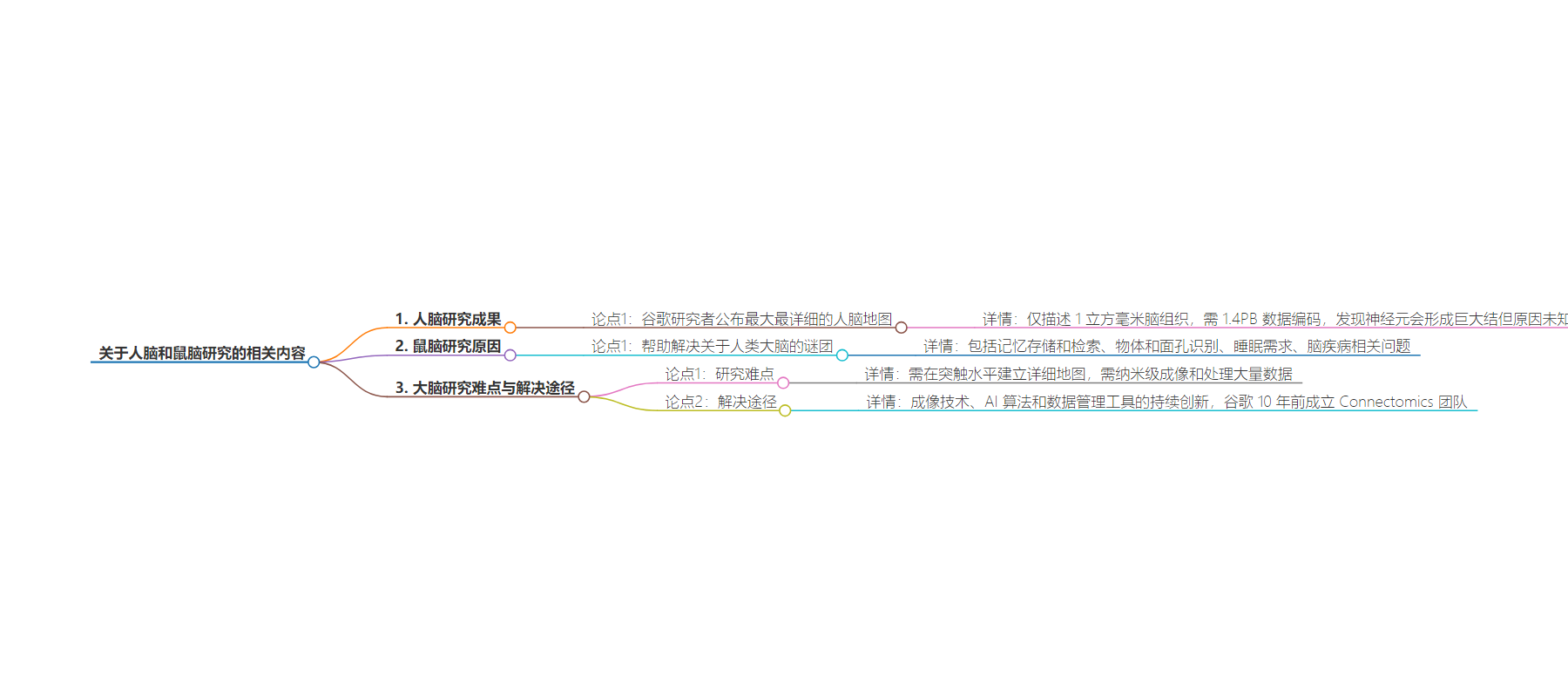包阅导读总结
1. 关键词:Mouse brain、Human brain、Connectome、Neurons、Research
2. 总结:Google 研究者发布了迄今最大最详细的人脑小区域地图,虽小但有新发现。现研究团队聚焦小鼠大脑,因其或助解人类大脑谜团。绘制脑神经网络连接图面临技术挑战,谷歌 10 年前成立相关团队。
3. 主要内容:
– 谷歌研究者发布了最详细的人脑 1 立方毫米组织的地图。
– 此地图带来了神经元连接呈巨大结等意外发现。
– 研究团队将目光转向小鼠大脑,因其可能有助于解开关于记忆存储与检索、对象与面孔识别、睡眠需求以及脑部疾病等谜团。
– 人类大脑有大量神经元和突触,绘制脑神经网络连接图即“连接组”能助理解大脑工作原理。
– 以纳米分辨率构建详细的突触水平地图需解决成像技术、AI 算法和数据管理工具等方面的重大技术挑战,谷歌 10 年前为此成立了 Connectomics 团队。
思维导图:
文章地址:https://blog.google/technology/research/mouse-brain-research/
文章来源:blog.google
作者:Ari Marini
发布时间:2024/7/9 16:12
语言:英文
总字数:960字
预计阅读时间:4分钟
评分:87分
标签:脑映射,连接组学,神经科学,AI 在研究,谷歌研究
以下为原文内容
本内容来源于用户推荐转载,旨在分享知识与观点,如有侵权请联系删除 联系邮箱 media@ilingban.com
Google researchers recently unveiled the largest, most detailed map of the human brain yet. It described just 1 cubic millimeter of brain tissue — the size of half a grain of rice — but at high enough resolution to show individual neurons and their connections to each other, and required 1.4 petabytes of data to encode.
Although it’s only a tiny sliver of the brain, the map led to several surprising discoveries. “For example, we found some of the wires will wrap themselves into these giant knots,” Google Research Scientist Viren Jain says of the neurons. “We have no idea why — nobody’s ever seen it before.”
Now, Viren and his team have got mice on the brain. And for good reason — these mammals may help solve mysteries about our minds that have eluded us since our beginnings. Mysteries like: How are memories stored and retrieved? How do we recognize objects and faces? Why do we need so much sleep? And what goes wrong in Alzheimer’s and other brain diseases?
“One reason we don’t have answers to these questions is that we don’t yet have the data we need in order to study the brain,” Viren says.
The human brain has about 86 billion neurons connected to each other by more than 100 trillion synapses that enable you to think, feel, move and interact with the world. By creating a map of these neural connections — known as a “connectome” — we can unlock new understanding about how our brains work, and why sometimes they don’t.
To build detailed maps at the synaptic level, researchers need to image the brain at nanometer resolution and work with massive amounts of data. It’s a significant technical challenge that requires continued innovation in imaging techniques, AI algorithms and data management tools. That’s why, 10 years ago, Google Research formed its Connectomics team.
